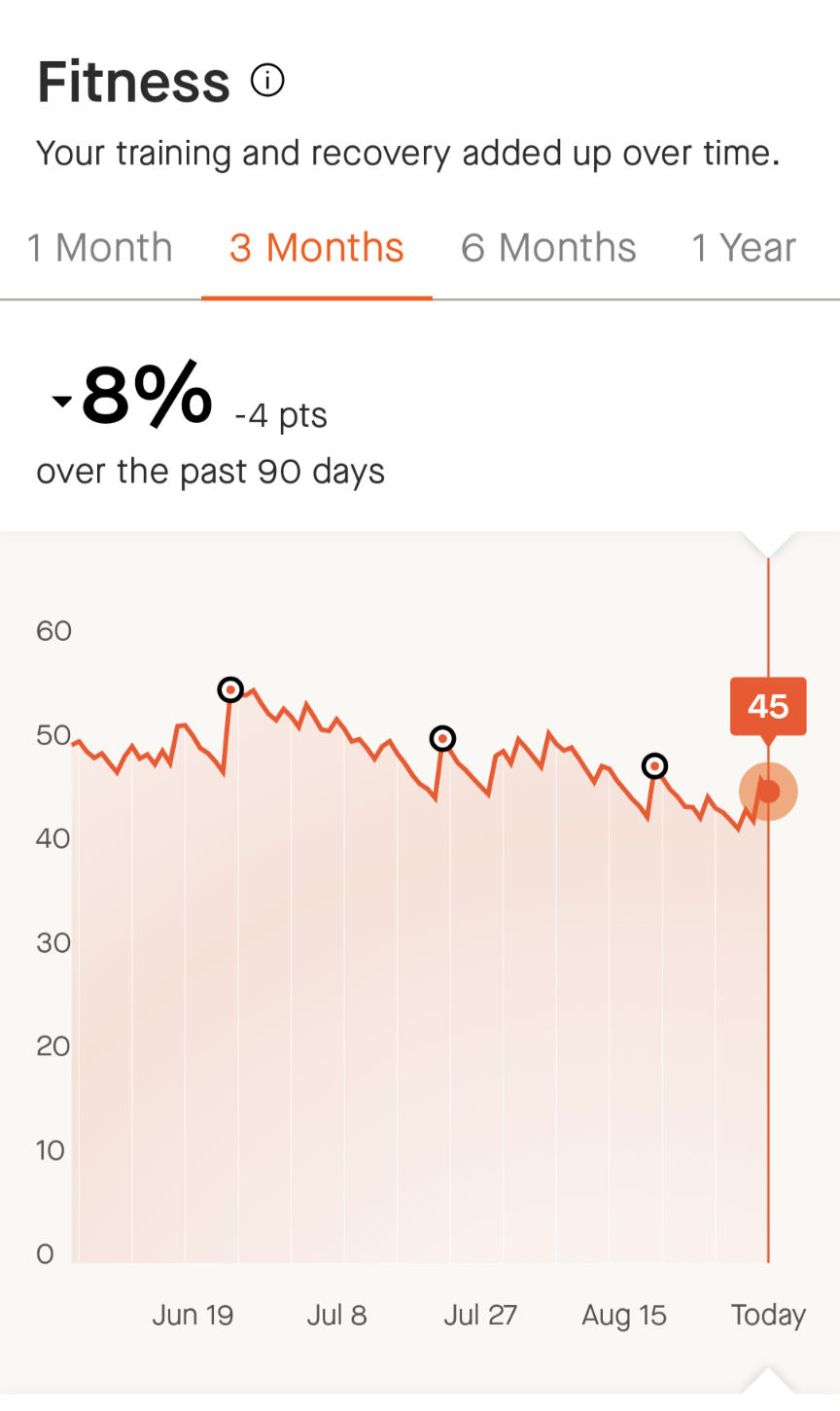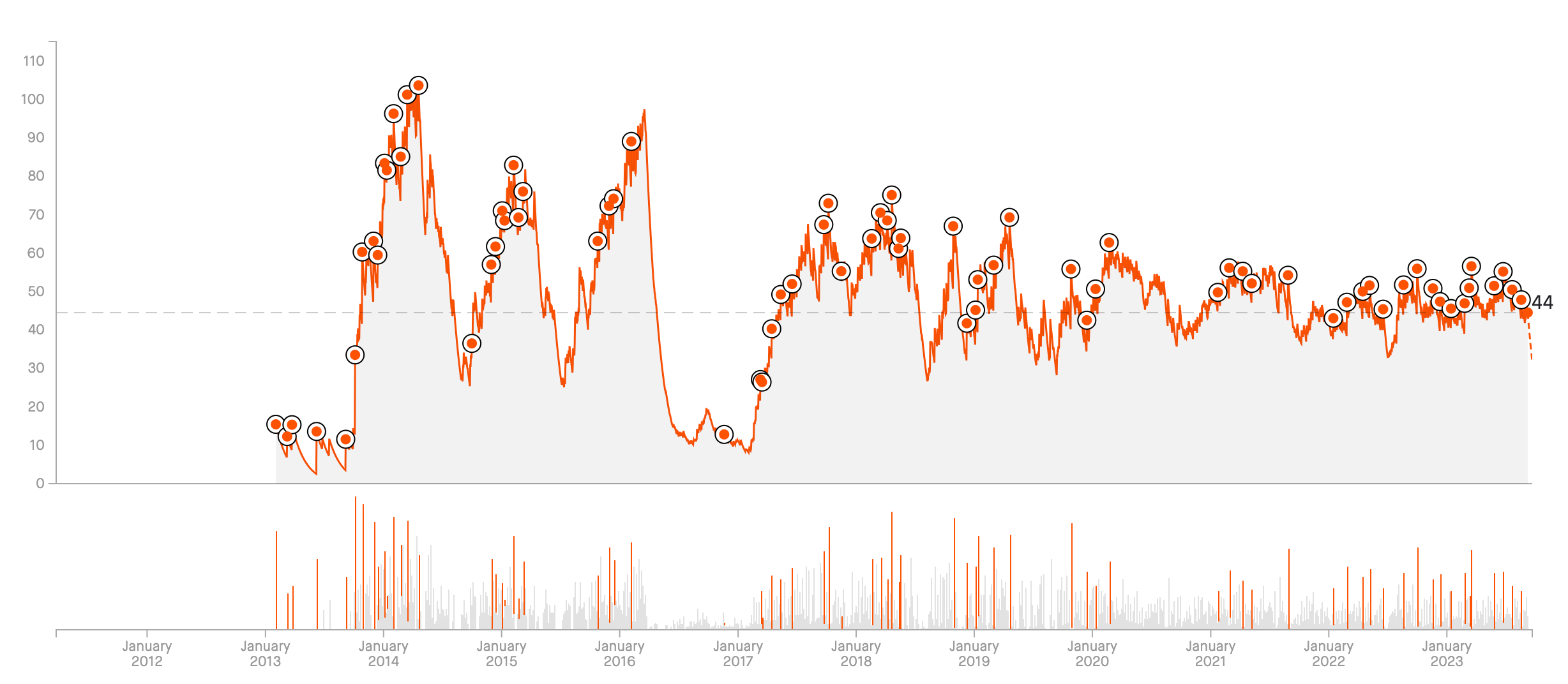
This is my fitness in the last 3 months according to Strava as I am training for an upcoming 100 miler. In reality this couldn't be any further from truth. My aerobic fitness went up significantly. I handle heat much better than 3 months ago, and I recover quickly from long training runs.
What Strava calls fitness is highly misleading. This should be called something like acute training load as this gives a lot of emphasis on time spent in high intensity. But that isn't fitness as people who end up training too hard (at too high intensity) all the time tend to plateau. This doesn't encourage to train smart and only works to reflect noob gains for people who have just started exercising.
Also consider the fact that the biggest gains in "fitness" on this graph are from finishing races. But again that is false. Running a long distance race in fact suppresses fitness for a few weeks as the body needs to recover from a higher than usual stress.








